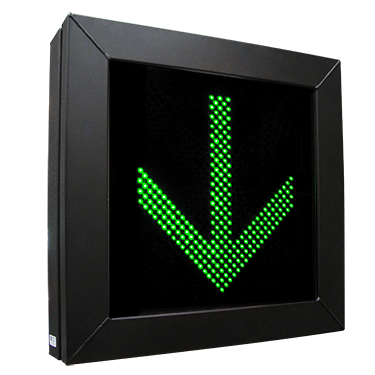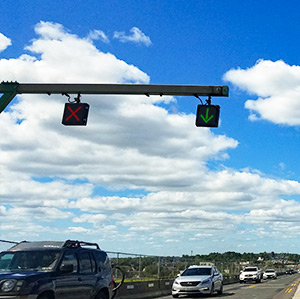
For many metropolitan commuters, rush hour and traffic congestion are daily nightmares that leave them begging the questions, “What can be done to remedy heavy traffic and make my commute faster and easier?” The answer they seek can be as simple as traffic authorities implementing reversible lanes.
Reversible lanes allow traffic on multi-lane roads to be changed to accommodate heavy traffic moving in one direction at certain times and the opposite direction at others. Typically, they are used at regularly scheduled times for helping to manage traffic near and within metropolitan areas. A prime example of this is traffic in the reversible lane moving toward the center of a city during morning rush hour and away from the city for the evening commute.
Reversible lanes also allow traffic authorities to close or reverse lanes for unusual circumstances (road construction, an accident, sporting events, concerts, etc.) that require more or fewer lanes to help improve traffic flows. This simple, yet effective, method of managing traffic and improving its flows is controlled by a reversible lane sign and provides the following benefits:
- Efficient use of all traffic lanes
- Improved traffic flows
- Virtually eliminates the need for the additional construction of traffic lanes
- Prevents traffic congestion, especially in dangerous situations, such as road construction
Reading a Reversible Lane Sign
Signs are only as effective as the messaging on them, their readability/ease of interpretation of the message, and their placement on the road. Typically with reversible lane signs, a dual-sided (able to be read by both directions of traffic) LED illuminated, reversible lane sign is installed above the lanes on which traffic is to be manipulated. These two-sided signs let drivers know which lanes they may use and a standard reversible lane sign provides drivers the following directions:

Solid Downward Pointing Green Arrow
- Indicates vehicle operators may drive in this lane
Solid Red X
- Indicates vehicles operators may not drive in this lane. Drivers in a lane marked with a solid red x should merge into a lane with a downward pointing green arrow immediately.
Signs can also be customized with the following designations:
Solid Yellow X
- Indicates driving is permitted in this lane, but the direction of traffic will soon be reversed and drivers should prepare to merge into a new lane.
Blinking Yellow X
- Indicates this lane has transformed into a center left-turn lane with both directions of traffic using it to make left turns.
Blinking, Horizontal Green or Yellow Arrow
- Indicates the lane must be exited in the direction indicated by the sign.
Signs can also be customized with electronic messaging to inform drivers of road conditions, closures, and additional information.
Implementing a Reversible Lane Sign

Thorough planning by traffic and roadway authorities will need to take place before implementing reversible lanes to ensure they are safe for drivers. Traffic engineers should survey roadways under all weather and traffic conditions to determine how reversible lanes will impact traffic. These surveys will then help determine which lanes will be best for reversed traffic operations and when they will switch to optimize traffic flows and avoid congestion. Finally, traffic authorities will evaluate resources, including road crews, to determine if carrying out reversible lanes is a safe initiative.
Once planning is completed, the necessary equipment for lane reversals must be implemented, including signage. Traffic authorities can ensure a safe transition to reversible lanes by implementing:
- Adequate Signage – LED signs that communicate reversals and access points.
- Necessary Barriers – At certain points, traffic will need to be separated by barriers. Traffic authorities should have the necessary equipment to set up/tear down these barriers as necessary.
- Traffic Detection Equipment – Cameras, sensors, and software can be implemented to monitor traffic and facilitate the triggers to automate lane reversals.
Once reversible lanes are implemented, additional resources and employees may be needed to monitor traffic trends and gauge the effectiveness of the signage. Traffic authorities will need to make continuous adjustments to enhance traffic flows and improve commuter safety. Ongoing maintenance, including testing of signs, automated systems, components, and safety measures, will need to be conducted regularly to provide the best possible transportation experience.
If you’re looking to ease traffic congestion while improving commute times, be sure to explore Signal-Tech’s reversible lane signs and other lane control solutions. We’re happy to provide guidance on what solutions are best for you and can provide designs and quotes free of charge. Contact us to learn more about our LED transportation solutions and how they can benefit your area’s commuters.


